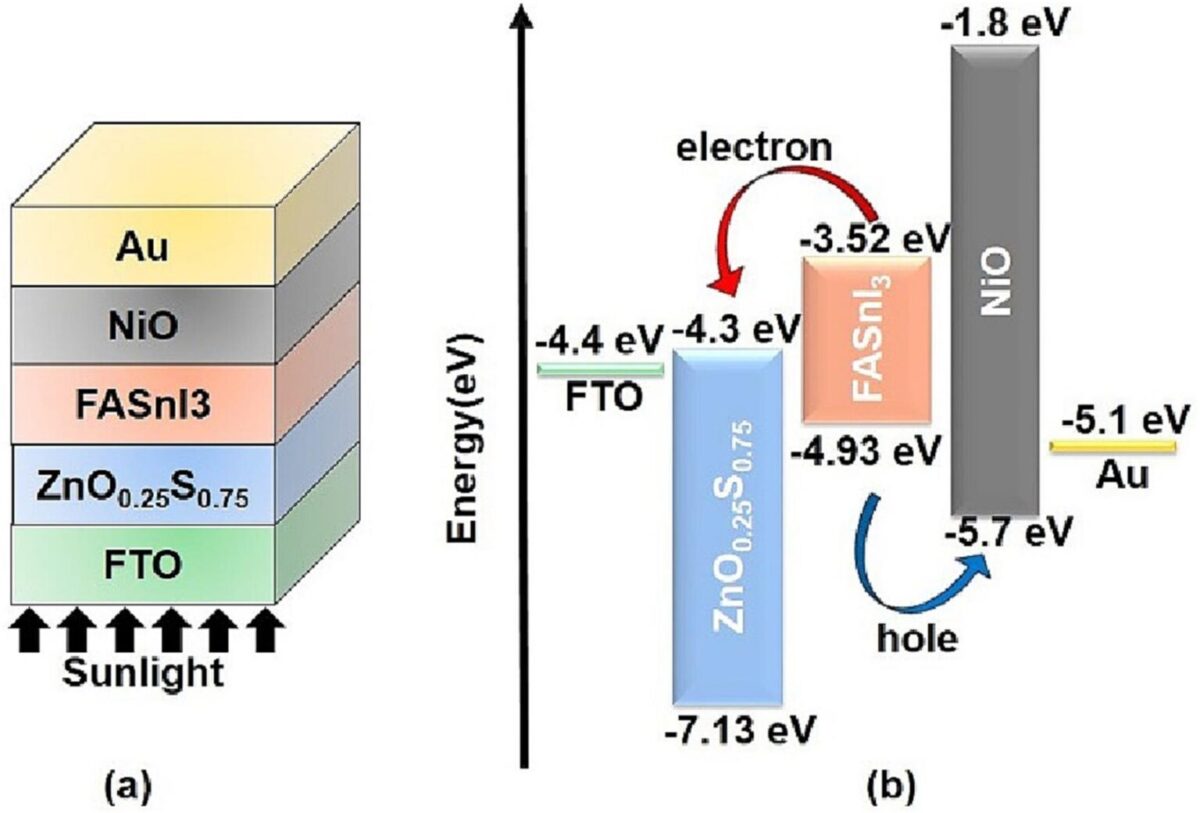From pv magazine India
Researchers at the National Institute of Technology (NIT), Silchar, Assam in India have designed a formamidinium tin iodide (FASnI3) perovskite solar cell with a potential power conversion efficiency of 31.57%.
They built the cell with a fluorine-doped tin oxide (TFO) substrate, a zinc oxide (ZnO) electron transport layer, the FASnI3 absorber, nickel oxide (NiO) hole transport layer (HTL), and a gold (Au) metal contact.
The proposed Au/NiO/FASnI3/ZnO0.25S0.75/FTO solar cell device structure revealed an exceptional open-circuit voltage of 1.2419 V, short-circuit current density of 28.35 mA/cm2, and a fill factor of 89.64%, and power conversion efficiency of 31.57%.
The researchers designed and investigated the device structure using SCAPS-1D solar cell capacitance simulator at AM 1.5G illumination, 1000 W/m2 incident power, and 300 K temperature.
The performance parameters of the proposed solar cell device structure were investigated with variations in the active layer (FASnI3) thickness, defect density, and doping concentration; and variations of NiO HTL and ZnO0.25S0.75 ETL thickness, electron affinity, and doping concentration to achieve higher performance. Moreover, they inspected the influence of series and shunt resistance and temperature on the performance parameters of the proposed solar cell device structure.
pv magazine print edition
“The FASnI3 parameter variations revealed that to attain high solar cell efficiency, we desire optimal FASnI3 thickness, defect density, and doping concentration, facilitated by a decent number of photons absorption and restricted non-radiative recombinations,” said Robin Khosla, a member of the research team and assistant professor at the National Institute of Technology (NIT) Silchar, in an interview with pv magazine.
The scientists shared their research in Results in Optics. The research team included Robin Khosla, Srinivas Mattaparthi, Dipesh K. Sinha, and Aditya Bhura.
This content is protected by copyright and may not be reused. If you want to cooperate with us and would like to reuse some of our content, please contact: editors@pv-magazine.com.




I’m very interested in solar renewable energy technology.
Kindly may I have your regular updates into my email as entered below.
Thanks